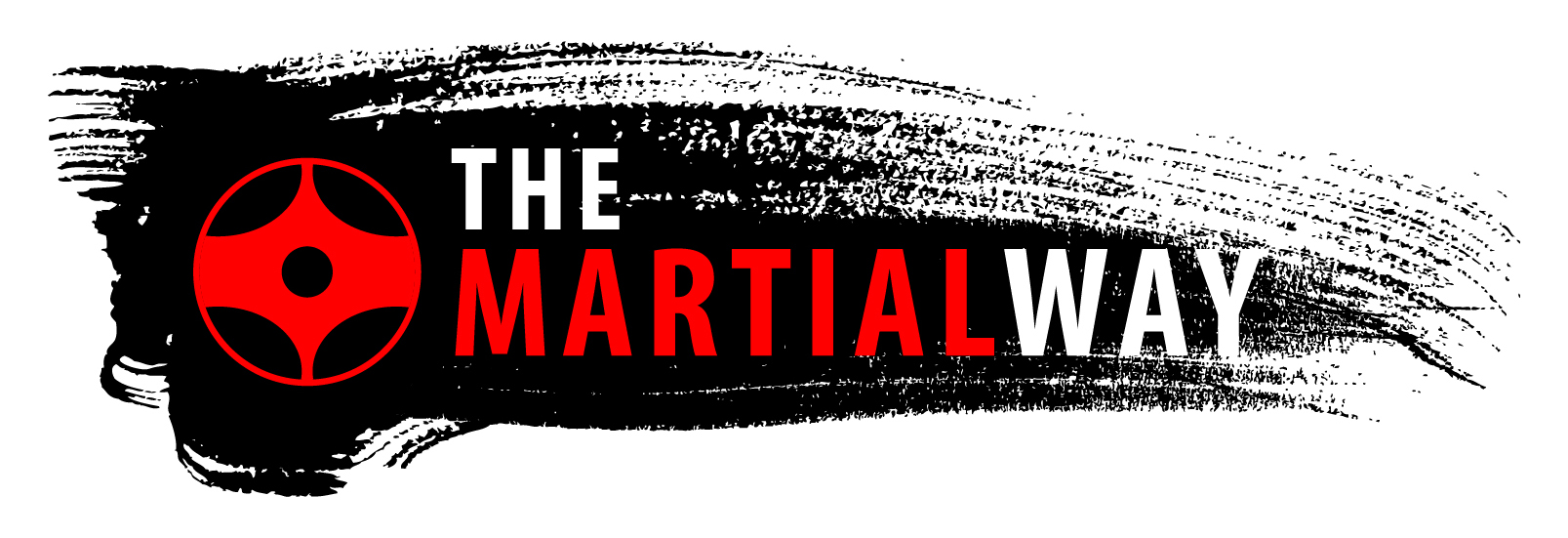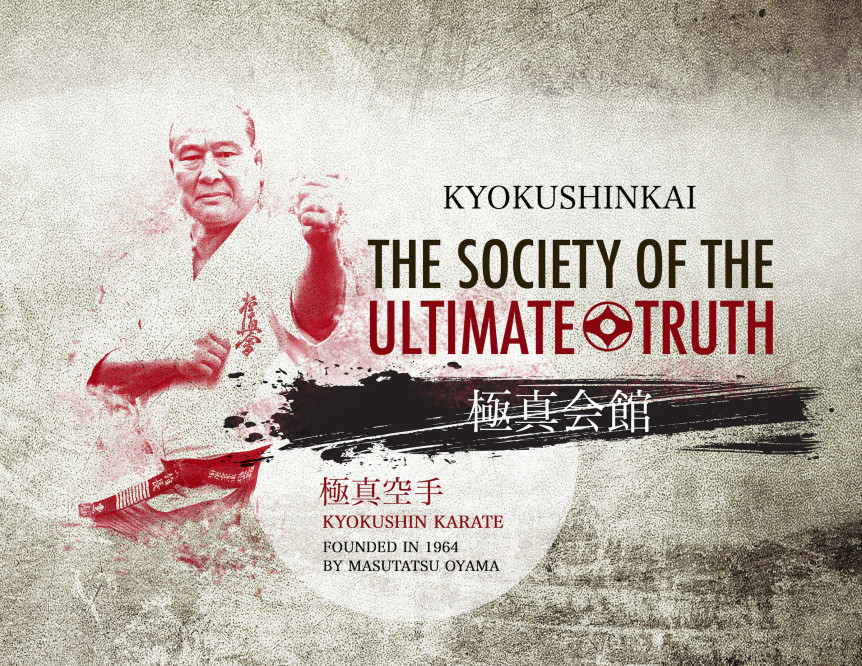The 20 Greatest Kyokushin Karate Fighters of All Time was first published by Liver Kick in 2013, with #20-17. This past year I continued the list for them #16 – 13. As mentioned in my last post, due to time commitments I wasn’t able to complete the list, until now. However, I am posting the remainder of the list here on my own blog. Here you can find the last instalment, #12 – 09.
As stated before, this is by no means the definitive list, and I am sure there are names missing, but I have done my best to complete the list with fighters based mainly on achievement, quality of competition and technical skill. The list is in no particular order, as it’s next to impossible to select one fighter over another, and further, it is something that no one would agree on. But I am sure we can all agree that the names on this list deserve recognition.
So far we have:
#20: Gary O’Neill
#19- Lechi Kurbanov
#18- Nicholas Pettas
#17- Ryu Narushima
#16: Makoto Nakamura
#15: Sam Greco
#14: Takashi Azuma
#13 Norichika Tsukamoto
#12: Kenji Kurosaki
#11: Hiroki Kurosawa
#10: Glaube Feitosa
#09: Shokei Matsui
So without further ado, here are #08 – 05 on the list….
#08: Kenji Yamaki
Nationality: Japanese
Achievements
- 18th All Japan Karate Tournament 3rd place winner
- 20th All Japan Karate Tournament 3rd place winner
- 21st All Japan Karate Tournament Champion
- 22nd All Japan Karate Tournament 8th place winner
- 5th World Karate Tournament 5th place winner
- 24th All Japan Karate Tournament 7th place winner
- 10th All Japan Karate Weight Tournament Champion
- 25th All Japan Karate Tournament 7th place winner
- 26th All Japan Karate Tournament Champion
- 6th World Karate Tournament Champion
- Completed 100 men Karate combat challenge
It’s hard to believe it by looking at Kenji Yamaki now, but as a junior-high school student he was the victim of relentless bullying. Although he was tall for a Japanese, he was quite thin, caused in part by his anemia, which marked him as a target. The bullying drove the young Yamaki to thoughts of suicide. On three occasions, he contemplates suicide, actually climbing to the top of the tallest building he could find and preparing himself for the death leap. As he has been quoted as saying, “I was very weak,” he says. “Everybody tried to attack me.” One day, the teen came across a Kyokushin Karate school near his home in Kawasaki. “At that time, karate was booming in Japan,” he says. “I learned that kyokushin had a reputation as the strongest karate, so I went to the dojo.” He signed up for lessons immediately under the famed instructor, Tsuyoshi Hiroshige.
Yamaki moved through the ranks of Kyokushin and the techniques come easily to him, which he put to good use in kumite, bare-knuckle sparring for which Kyokushin is renowned for. “I decided to quit thinking about suicide and become the world kyokushin champion,” he says. As his reputation as a Kyokushin fighter increased, the bullying decreased. “It stopped completely after one year,” he says. “I have always respected kyokushin, and at the time, I was grateful to have learned it,” he says.
At the age of 21 he placed third in the All-Japan Karate Tournament. Over the following decade, he placed in the top 10 at the All Japan event and the World Karate Tournament, every year, and finally winning the 6th World Karate Tournament Championship in 1995, and completed the 100 Man Kumite.
At 6-foot-3-inch (183 cm), the heavyweight moves and kicks like a bantamweight. Known for his trademark moves, the three most basic leg techniques of Kyokushin Karate: the front kick, round kick and side kick. “The positioning of your knee is the key,” Kenji Yamaki says. “From a standing position, you have to be able to chamber your knee as high as possible, and that’s what gives you the luxury of options in terms of where and how you place the kick. If you bring your knee up high, you can kick at any height. But if you chamber your leg weakly and only bring your knee up slightly, your mae geri will be limited to the waist or lower.”
Also know for his great power, Yamaki has stated this was influenced greatly by an incident that took place while he was training with Mas Oyama, the style’s founder: “[He] was teaching us one day, and I watched him punch a tree as he was telling us how to develop power. The tree was about 1 meter (3.3 feet) in diameter, and his punches were shaking the leaves. He said: ‘This is how you punch! This is how you use your power!’ That image never left my mind.”
After winning the world tournament, he immigrated to the United States and setting up a dojo, Yamaki Karate, in Torrance, California. Kenji Yamaki’s remarkable kicking techniques reflect that same method of combining speed and power for the most devastating results. He honed those attributes during his years of grueling workouts and forged them into the legacy he now passes on to his students in America.
#07: Francisco Filho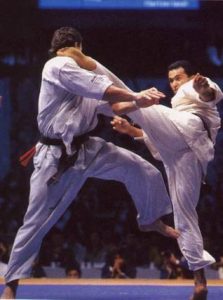
Nationality: Brazilian
Achievements
- K-1 World Grand Prix 2001 Finalist
- K-1 World Grand Prix 2000 in Yokohama Champion
- 7th World Karate Tournament Champion 1999 (IKO-1)
- 1st World Super Heavyweight Karate Champion 1997 (IKO-1)
- Completed 100 Man Kumite in 1995.
KARATE FIGHT HISTORY:
- 7th World Open Karate Championships 1999 – 1st Place (Defeated Hajime Kazumi)
- 1st World Weight Category Championships 1997 – 1st Place SHW (Defeated Glaube Feitosa)
- 6th World Open Karate Championships 1995 – 3rd (Lost to Hajime Kazumi)
- Hundred Men Kumite Completed 1995
- 5th World Open Karate Championships 1991 – Final 16 (Lost to Kenji Yamaki)
- 7th South American Tournament 1994 – 1st
- 6th South American Tournament 1992 – 1st
- Brazilian Open Champion – 1990, 1992, 1993, 1995
- 5th South American Tournament 1989 – 1st
- Brazilian Open Champion 1988 – 6th
- Brazilian Open Champion 1987 – 7th
- Uruguayan Open Champion 1991 – 1st
Francisco “Chiquinho” Filho is a Brazilian former Kyokushin Karateka and kickboxer. He is one of the few karate-ka to have successfully completed the 100 man kumite more than once. He holds notable K-1 wins over Sam Greco, Andy Hug, Remy Bonjasky, Ernesto Hoost, Peter Aerts and Stefan Leko.
Filho started Kyokushin around age of 10, encouraged by his older brother. Originally his goal was to train two years and then switch to other styles. “I wanted to know a little of everything. But during class, I began to realize that the Kyokushin had philosophy, respect, strength, technique, speed and discipline. So I asked myself, ‘why bother leaving the Kyokushin, if I can learn everything here?‘” He received black belt six and half years later.
He has since held championship titles in both K-1 Kickboxing as well as in IKO1-Kyokushin. 1999, Francisco Filho made his mark in the history of Kyokushin as the first foreigner to win the World Championship, at the 7th World Tournament in 1999 where in a very close fight with Hajime Kazumi he won by board breaking.
This wasn’t the first controversial win for Filho, the other was against Andy Hug. In 1991, at the World Championships the fighters faced each other. The two engaged in a competitive bout, but at the end of a round Hug was struck with a kick after the bell and knocked out. The Swiss team protested and Mas Oyama declared that while the strike landed after the bell, the kick started before the bell and thus had to be defended.
Filho was not known as an exciting fighter, but was dangerous and had great reflexes, and great counter fighter, which resulted in some of his opponents being afraid to engage. His cautious style style is used by few Kyokushin fighters, which is a cross between technical fighting & countering, the key is being deceptive & waiting till an opponent makes & opening and then counter. The position of the hands in the guard is somewhat different, usually the lead hand sticks out, generally this is because the lead is used to gauge the distance somewhat & used to parry/block whatever technique an opponent throws, as well as a means of aiding timing. Filho is a classic example of a fighter who uses this style – the lead hand & yoko geri play a huge part in his style of fighting.
He has not taken part in any major competition since 2004 but remains active developing young fighters and in overseeing Brazil’s Kyokushin national team. In 2012, he appeared on The Ultimate Fighter: Brazil coaching with Vitor Belfort.
#06: Hitoshi Kiyama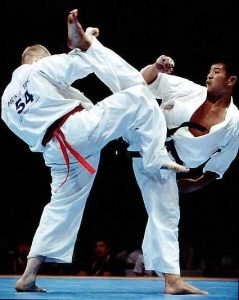
Nationality: Japanese
Achievements
- 8th World Tournament – 1st
- 7th World Tournament – 3rd Round
- 2nd World Weight Tournament – 1st
- 1st World Weight Tournament – 1st
- 34th All Japan Tournament – 2nd
- 33rd All Japan Tournament – 1st
- 32nd All Japan Tournament – 1st
- 30th All Japan Tournament – 3rd
- European Championships – 1st
- 1st World Team Cup – 1st
Hitoshi Kiyama is an example of a fighter who used intelligent pressure while fighting, with a lot of success. Stalking opponents applying constant pressure with strikes and with movement, grinding opponents down with a high work rate and when they slow down, going in for the KO.
Kiyama came to the world’s attention when he claimed first place at the inaugural World Weight Tournament in 1997. The following year he finished 3rd in the All Japan and was part of the Japanese team that won the World Team Cup. 1999 was a disappointing year for Kiyama as he lost in the second round of the World Tournament. Since then success followed for Kiyama as he won successive All Japan Titles, and the 2nd World Weight Tournament (this time in the heavyweight section).
It was at this tournament where Kiyama showed his full ability by using spectacular mawashi geri jodan, and ushiro mawashi geri jodan coupled with excellent punches and low kicks. This combination helped turn the fight around against the excellent Russian Sergey Osipov in the final where the continual pressing and aggression from Kiyama brought him the title.
The following year Kiyama became one of a select few to reach three All Japan finals in succession where he was defeated by Japanese legend Hajime Kazumi in a very close match. His undoubted zenith was at the 8th World Tournament in 2003 where he defeated Kurbanov, Teixeira, and Plekhanov to become World Champion.
#05: Ewerton Teixeira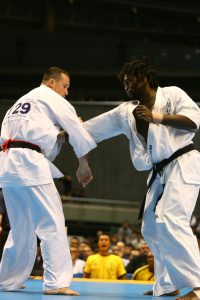
Achievements
- 2011: The 10th World Open Kyokushin Championships – 2nd place
- 2007: The 9th World Open Kyokushin Championships – 1st place
- 2005: The third World Cup in weight categories – 1st place in the heavyweight division
- 2003 8. Open Kyokushin World Cup – 3rd place
- 2002: World Cup in Sao Paulo – 1st place in the heavyweight division
- 2001, 2002, 2003, 2004, 2007: The Championship of the Americas – 1st place
- 2001: Brazilian Championship – 2nd place in the open category
- 2000: Championship of the state of São Paulo – 1st place in the heavyweight and open
- 1999: The Championship of the state of São Paulo – 1st place in the junior heavyweight
Ewerton Teixeira is a Brazilian professional kickboxer, mixed martial artist, and Kyokushin karateka. A student of Shihan Seiji Isobe, Teixeira began Kyokushin karate training at the age of 9 years old. At 21, he received a black belt. In 2001, for the first time he became the champion of the Americas. This success was repeated four more times.
Teixeira is known as a tactical fighter and was virtually untouchable in the world of Full Contact Karate. He was a five-time All American Champion in 2001 (defeated Kentaro Tanaka), 2002 (defeated Lechi Kurbanov), 2003 (defeated Sergey Osipov), 2004 (defeated Eduardo Tanaka) and 2007 (defeated Andrews Nakahara). He won the 9th World Open Karate Tournament in 2007 (defeated Jan Soukup in the final).
In 2003 he won 3rd place on the 8th Open World Championship IKO1, defeating, among others, Glaube Feitosa . Two years later he was world champion in the heavyweight category (+90 kg). November 18, 2008, he won 9. Open Championship. In the final tournament, defeated by ippon Czech Jan Soukup.
After becoming the ninth Kyokushin World Champion in 2007, Teixeira entered K-1 in 2008.
Stay tuned for the final four! Osu!
